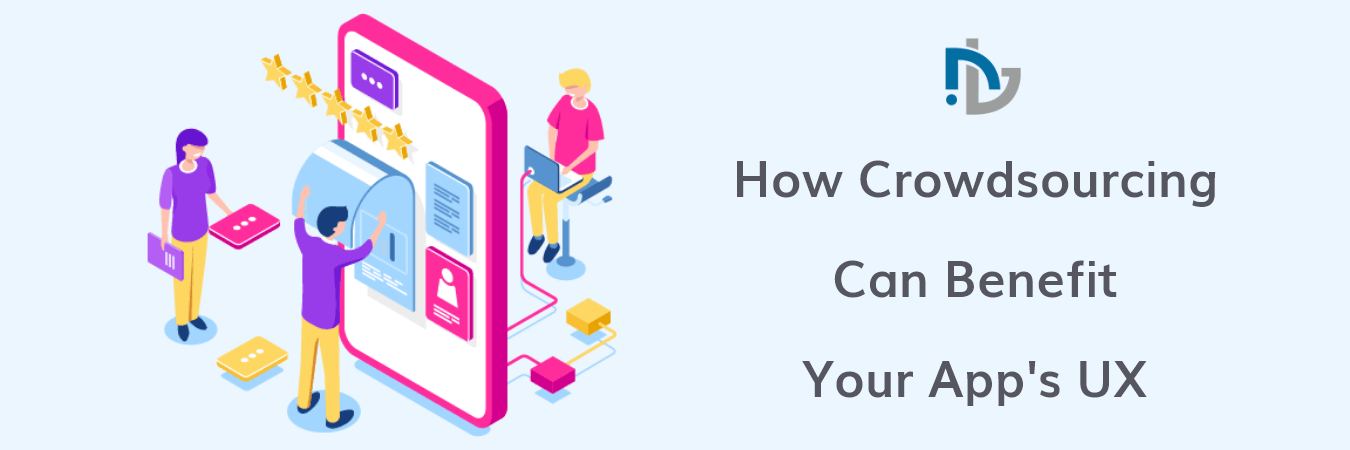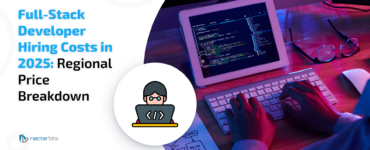Crowdsourcing. You may have heard of projects that assemble the work and opinions of a large group of people online, but what you may not realize is that this method actually has myriad benefits for app user experience (UX) design.
Internet platforms can be a great place to build both a focus group and a dedicated freelancer team who will help promote the final product. With all the costs associated with mobile app development, this can even be a great way to minimize expenditures while maximizing quality.
Assembling an ideal UX is a difficult task, and you’ll need all the feedback you can get. Implementing crowdsourcing into the UX development process will inevitably save time and money with a greater ability to catch mistakes from the beginning.
Here’s what you should know.
The Role of Crowdsourcing in UX Development
Crowdsourcing doesn’t just mean collecting information from a broader collective. It means working collaboratively with your potential users to build the best possible interface from the beginning.
Regardless of your project type, crowdsourcing can be implemented early on in processes like:
- Collaborative workshops
- Template design
- Bug testing
- Testing tools
Making these UX development stages a collaborative experience means being open to feedback and perhaps even adopting a new vision. The result can be a UX that works, providing smooth and seamless navigation and accessibility for the user.
Typically, achieving this result requires near-complete transparency from the developers. You’ll have to be willing to use platforms like GitHub to reach out to experts within the broader community for helpful insights and contributions. This also includes developing rubrics and questionnaires that your collaborative community can use to more thoroughly evaluate your design.
Crowdsourcing can even take the form of collaborative workshops hosted either live or virtually in which potential users and stakeholders of diverse backgrounds can directly submit their input and design expertise. Since these stakeholders will likely represent some of the target audience using your app, integrating them directly in the design will keep you from making most UX missteps.
Even participating in UX design classes can be a method of crowdsourcing. Consulting with instructors and peers on their opinions, collaborating with them on projects, and collecting their evaluative feedback can boost your design strategy through a greater learning experience.
With crowdsourcing fulfilling a key role in design performance and quality assurance, you can begin to reap some of the many benefits that can come from community collaboration.
The Benefits of a Crowdsourced UX
Engaging with a community can be a great method of streamlining your UX testing from the beginning. Like with any other UX development process, the earlier you can iterate tests of your software the better. UX is an often-neglected aspect of these testing needs, as a bad design can be just as damaging to app functionality as the average bug.
But the benefits of a crowdsourced UX go behind faster fixes. This collaborative process adds perks that can help maximize the success of your app. These include:
- Better overall UX
First and foremost, crowdsourcing simply enhances user experience by encouraging the implementation of useful features. A user testing source can make suggestions you might never have thought of during the UX development process, leading to an experience that will keep users coming back and encourage others to do the same. This will inevitably boost revenues, maximizing the impact of the application.
- Reduced costs UX Development
Crowdsourcing also lowers development costs. Hiring a full-time tester can cost in the ballpark of $50,000 in yearly salary, which may be impossible with a smaller team and budget. Instead, appealing to stakeholders for collaborative feedback can make catching UX problems cheap and easy. Developers have had success through strategies like posting a list of bugs and known issues on GitHub, for example, and requesting fixes.
- Greater delivery speed
The collaborative process has the added benefit of speeding up delivery times for app and software roll-outs. New features can be tested thoroughly and evaluated by a diverse user group early on. This gives devs a quicker turnaround time in catching problematic bugs and issues and delivering an ideal UX faster.
- Localized insights
For apps with an intended international audience, localization crowdsourcing can also provide invaluable insights. Crowdsourcing enables broader cultural interpretation and analysis of your UX design, which can help you catch functionality and implementation problems you otherwise might have missed. This makes for a neater product that translates well to a global audience.
- Greater app engagement
All told, this makes for an app with a greater sampling of real user input. This will ideally represent the voices of diverse groups and intended audiences, with feedback on everything from aesthetics to overall accessibility. When a diversity of opinions is heard and ideas shared, the probability of greater audience satisfaction only increases. This can provide a user experience worth coming back to and recommending to others.
The importance of ensuring web accessibility is often not stressed enough. Poorly optimized UX can make it impossible for users with screen readers and other assistive tools to navigate your content, locking out massive audiences for your application. Worst-case scenario, poor accessibility can even mean legal trouble, as incurred in the Robles v. Domino’s Pizza case. Crowdsourced UX can help you avoid these problems while maximizing the potential for engagement on your platform.
However, guaranteeing these benefits will require a careful approach to implementing collaborative ideas.
Implementing Community Feedback Effectively
The community is a great place to reach out for invaluable feedback and collaboration on all your UX design processes. From template design to functionality testing, the melting pot of insights and experiences accessible through the internet is a resource developers can and should be taking advantage of.
Opportunities for expert input are only increasing as the software game is becoming increasingly democratized. One of the biggest trends in tech is the increase in self-taught software developers. Many of these developers are active parts of only communities for app creation and UX testing and bring their own unique insights to the design process.
You can maximize the potential of your app with the help of community stakeholders like these, but it takes the right approach. Developers must be open to peeling back the curtain and inviting others in. Empathy and active listening are a must. A willingness to explore new ideas must be maintained.
First, however, you need to build your community, test the waters, and collaborate on other projects as well. Create a helpful reputation and a network of social resources will be readily available to help you make the most of your app’s UX.
Bottom Line
Crowdsourcing is an often overlooked approach to UX that can have incredible benefits if implemented appropriately. For developers launching an app with a smaller team and fewer resources, this approach is especially helpful in cutting costs and maximizing delivery speeds.
By collaborating with diverse individuals in an online marketplace of ideas, any issues in your UX can be better caught long before it even enters testing. This way, the testing process can take place throughout a project while simultaneously encouraging a wider audience for the final product.
Take note of these benefits and explore these strategies for an enhanced user experience. As a result, you can improve the returns and engagement level with your application.








